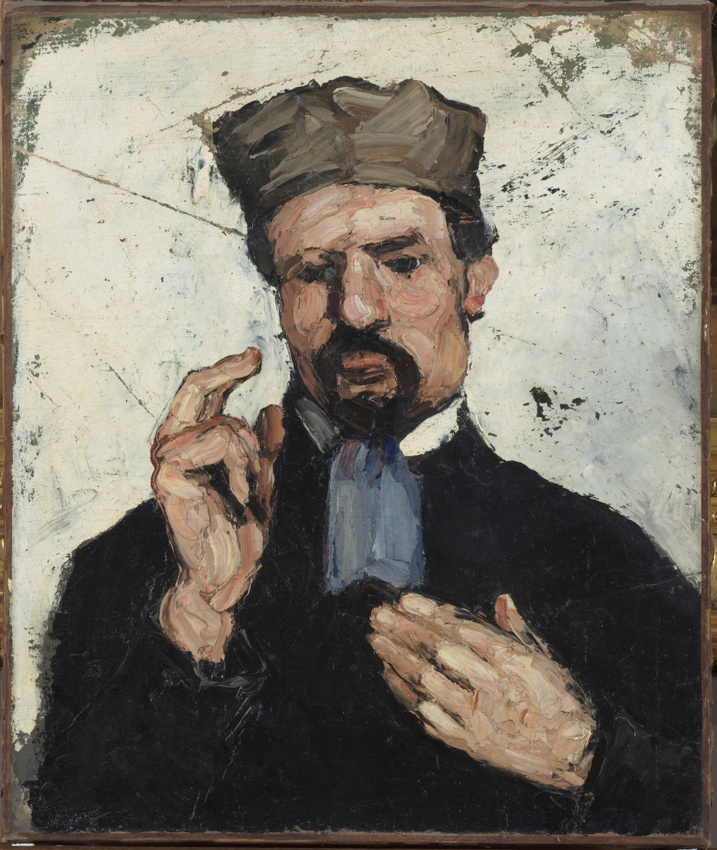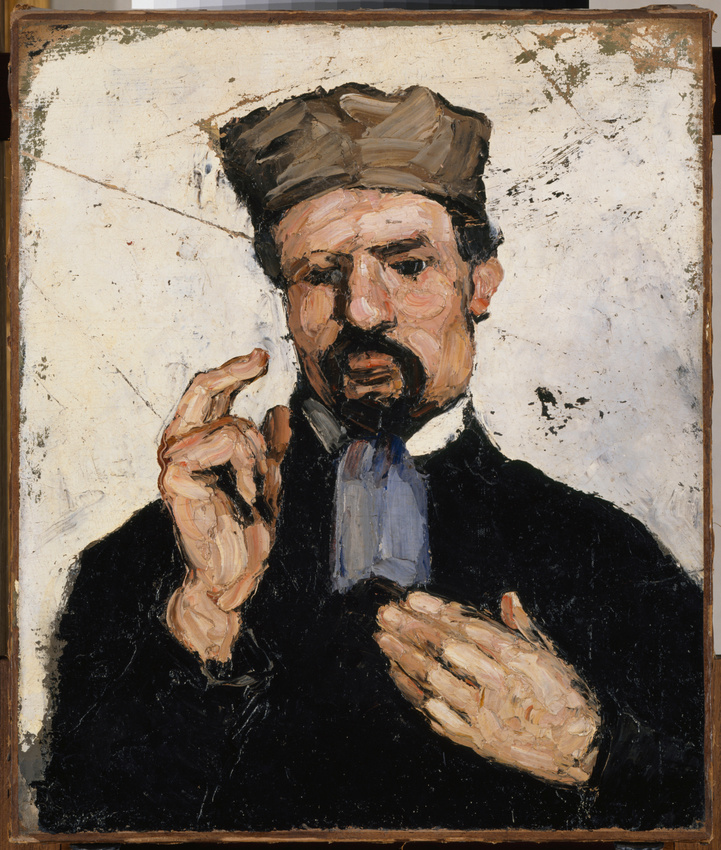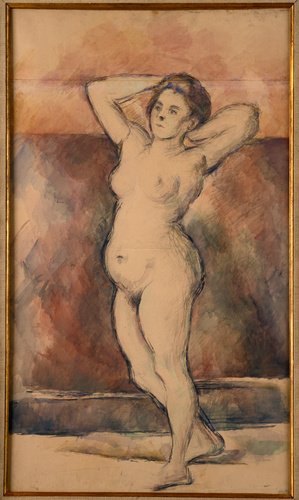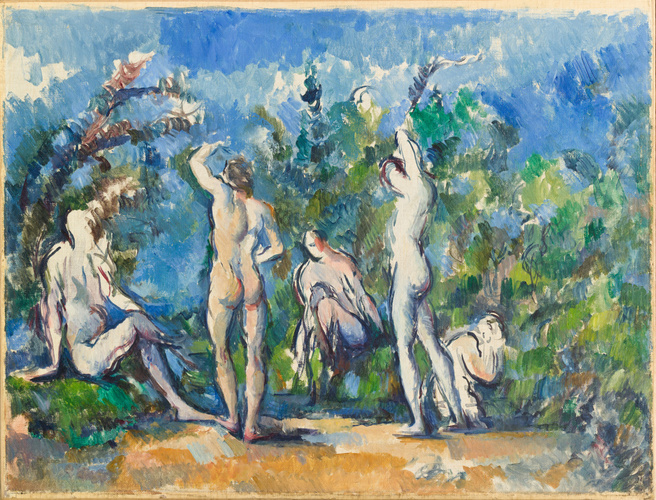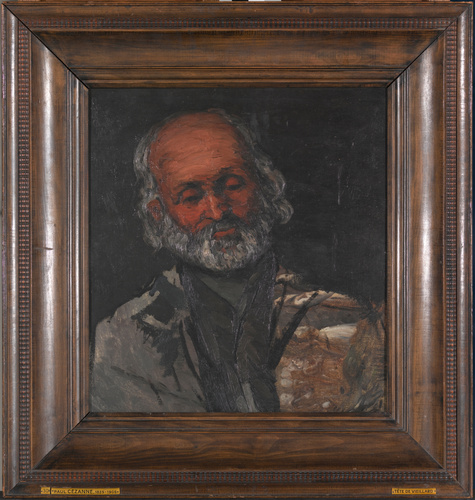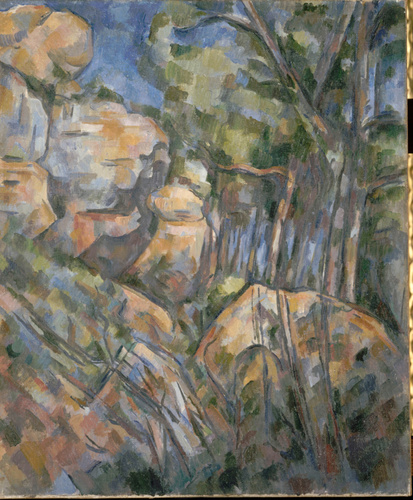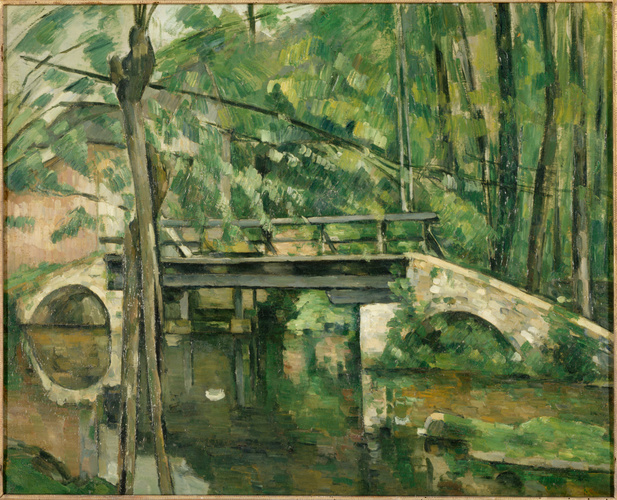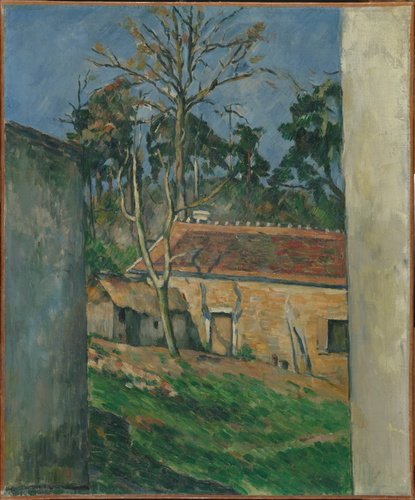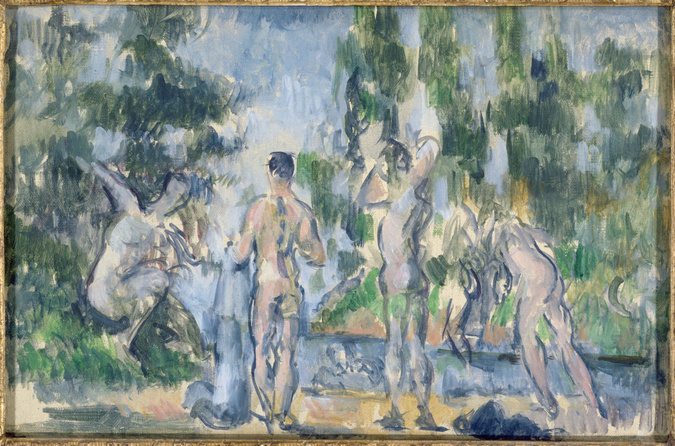L'Avocat (l'oncle Dominique)
In November 1866, Valabrègue, a friend of Cézanne's from Aix en Provence, told Zola about the extraordinarily rapid way the young Paul was painting at this time: "I only posed [...] for one day. The uncle is usually the model. Every afternoon, another portrait appears".
Having moved to Aix at the end of the summer, Cézanne dedicated himself to his first genuine painting campaign. He put all his effort and enthusiasm into producing a collection of still lifes and portraits, ten of which featured his maternal uncle, the bailiff Dominique Aubert. The subject is portrayed from different angles, dressed as a monk, wearing a turban or even a cotton hat, without any indication of the deeper significance of these costumes.
Here, the subject, portrayed as a lawyer, has adopted a very solemn expression. This curious half-length figure has a certain monumentality which emphasises the contrast between the black court attire and the white background, a strong contrast common in Spanish Golden Age painting, and taken up by Manet.
At this time, Cézanne used Courbet's palette knife technique, applying thick layers of paint to model his subject. He would later call this style "couillarde", (ballsy).
This youthful work, like all the others completed during those few months in Aix, marked a decisive stage in the artist's career. It was at that point that Cézanne asserted himself and become a real painter.
